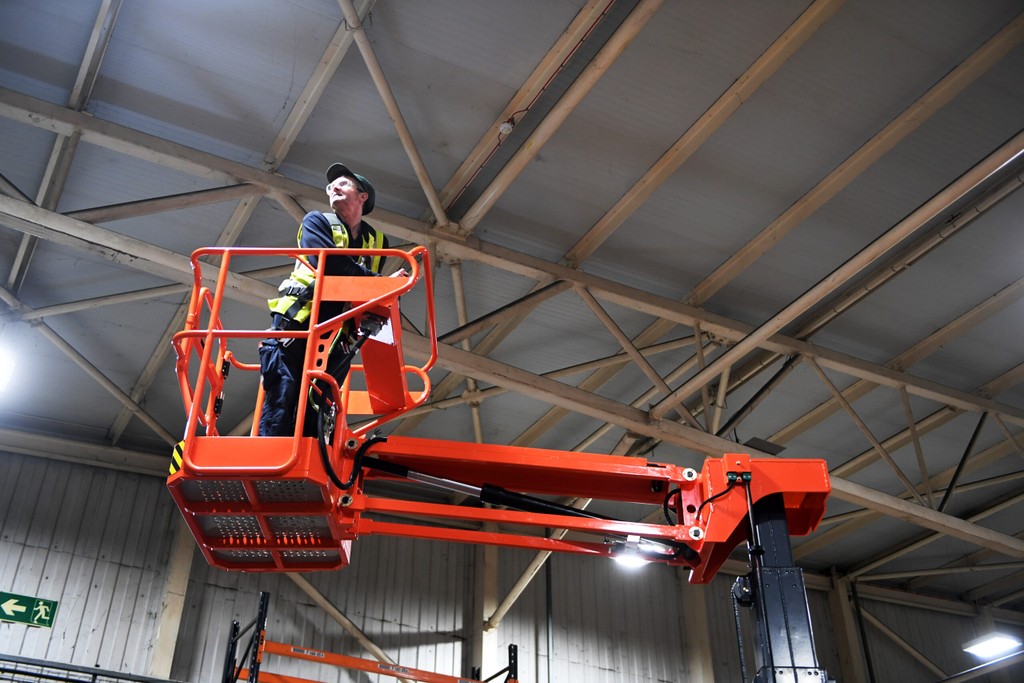Working at height can be one of the riskiest things you do as an employee. Not only is it the biggest cause of fatal workplaces injuries, according to HSE (Health and Safety Executive), and was the cause of 8% of all workplace injuries for the 2022/2023 period, but the number of deaths caused by falling from height increased in 2023 vs 2022.
According to HSE, it is estimated that in 2023 alone, at total of 586,000 days were lost by full-time workers due to time off needed as a result from non-fatal falls from height at work.
We wanted to take a look at the hazards involved in working at heights to raise awareness of how dangerous it can be, and provider guidance on what businesses can do to mitigate this risk and increase safety.
In which industries are workers most at risk of falling from height?
HSE data shows that there were an estimated 13,000 injuries caused by falls from height in 2023, with those in construction (and specifically roof workers) the likeliest to experience danger. In fact, 25% of all deaths in the construction industry happen on roofs, with falling through fragile materials on roofs accounting for the majority of deaths amongst roofers (HSE).
The most common workplace injuries
According to data covering all causes of workplace accidents, the most common injuries seen are:
| Type of Injury | Estimated Incidence Rate (thousands) 2022-2023 |
| Fracture/Broken Bones | 66 |
| Dislocation of Joints | 19 |
| Strain/Sprain | 124 |
| Superficial | 97 |
| Lacerations/Open Wounds | 80 |
Each of these injuries can be direct risks of working at height. Whilst they may be fixable, they could lead to long term health issues and more serious injuries being sustained. Another study by injury solicitors claimed these more serious injuries were the most common dangers of working at height:
- Brain haemorrhaging
- Head injury
- Skull fractures
- Spinal injury
- Paralysis
- Rib fractures
- Lung contusion
- Cardiac and aortic rupture
- Broken limbs
- Amputation injuries
This highlights the severity of how life-threatening these types of falls can be for workers, emphasising the importance of putting the necessary safety protocols in place.
What To Do If a Worker Is Injured After Falling From Height?
If you have witnessed a colleague fall from height at work, try to remain calm, and tell them to keep as still as possible. It is imperative you do not try to move them, as movement could worsen injuries sustained.
1. Inform a first aider
If you have a medical first aider on site, inform them of the incident, and get them to assess the situation. If the fall appears serious you should call for further medical assistance; prompt action and proper communication in these incidents can make a significant difference to the outcome. For emergencies dial 999, and for less urgent care advice call 111 in the UK.
2. Talk to your colleague
While waiting for a first aider, if the worker is conscious, try to talk to them and ask if they can feel pain anywhere, looking for signs of bleeding. If there are areas of bleeding, you can apply pressure, using a clean pad, to ease this while you wait for proper medical care.
Ideally, once the on-site first aiders and trained medical professionals arrive, they should take control of the situation, at which point it is important to follow your company’s or the site’s safety procedures.
3. Report the incident
Finally, you should also let senior members of staff and health and safety professionals know of the fall, so they can record the incident and carry out any necessary investigations.
Where do most falls from height occur at work?
According to HSE, you’re most at risk of working at height if dealing with:
- Roof lights
- Liner panels on built-up sheeted roofs
- Non-reinforced fibre cement sheets
- Glass
- Rotted chipboard
- Slates and tiles
This aligns with the previous data showing roofers in the construction industry were most susceptible to the dangers of working at height.
What can employers do to reduce the risk?
There are many measures employers can take to reduce the risks and hazards in working at height. For example, for workers working on mezzanine floors, handrails should be installed. Those working at height should aim to avoid doing so alone, allowing there to be another staff member there to monitor any risk and support them in their activity.
- Plan in advance: HSE recommends work at height must be planned and organised in advance by employers.
- Risk assessment: It is required that those working from height are deemed to be competent and the risk of falling from height is assessed in advance.
- Deliver training: Workers operating access platforms should have the appropriate training.
- Inspect equipment: The equipment itself should be fully inspected and well maintained, making it important to fully vet your provider before hiring powered access.
- Choose the right equipment: Where working from height is unavoidable, using the right equipment should be considered as the first port of call, including the use of appropriate equipment such as scissor lifts or cherry pickers. All measures should be taken to make the working space as safe as possible.
Are you looking to hire safe and reliable scissor lifts or cherry pickers? Need powered access training for you or your team to ensure increased safety when working at heights? At Horizon Platforms we offer a wide range of powered access platforms for hire and training courses in access platform safety, so head to our pages for further information.

